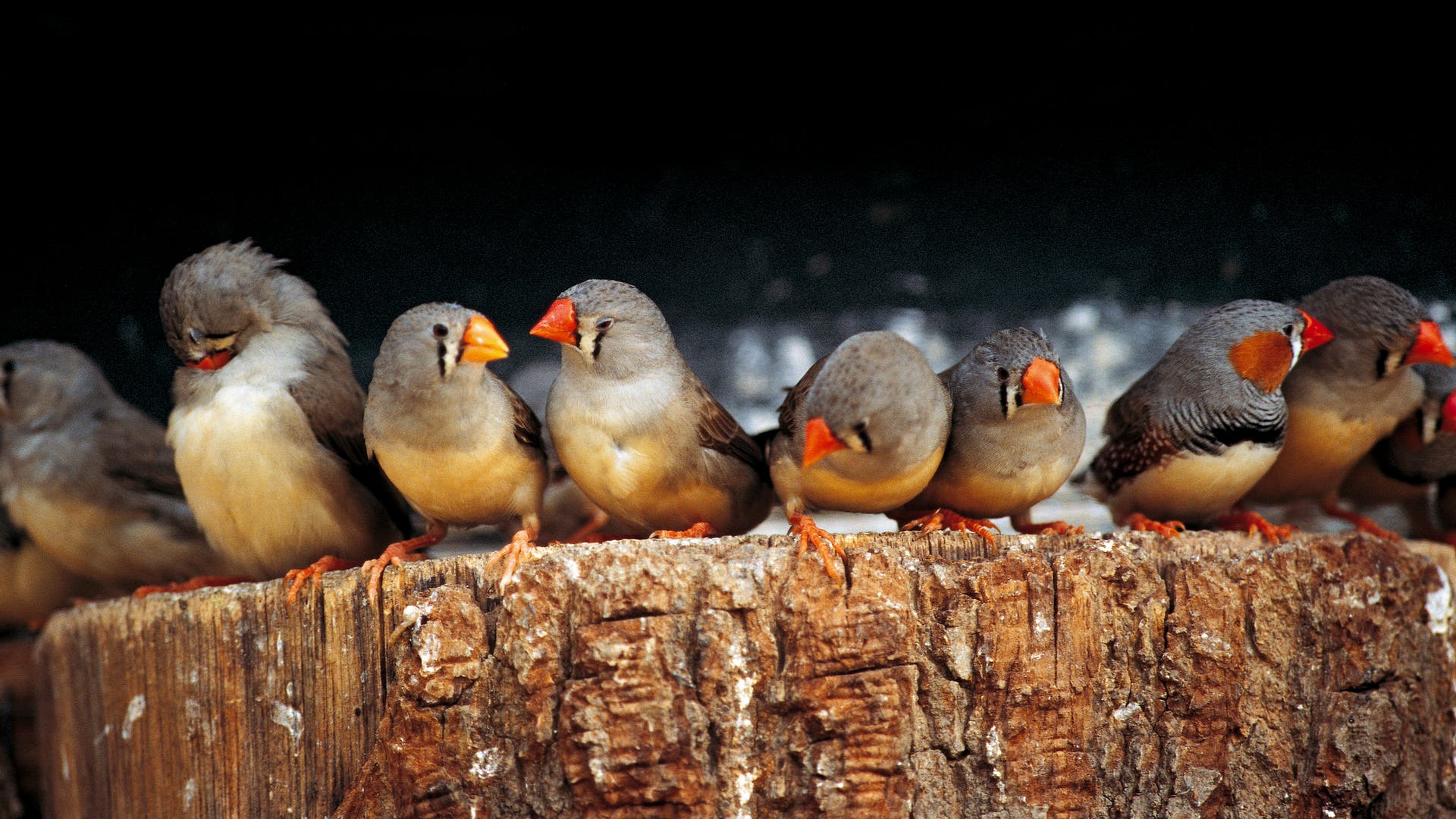Subsequent studies supported this hypothesis. In 2016, a research team led by Timothy Ginter of the University of California, San Diego, reported that starlings (Sturnus vulgaris) Transformed sequences are only recognizable if all subtleties are removed from the sounds. The results confirm the importance of microelements for animals when listening to their songs.
The waveform of an audio signal can be described at two levels: envelope and microstructure. The former consists of slow fluctuations in amplitude, while the latter consists of rapid fluctuations in frequency and amplitude within the waveform (see ‘Fine structure’). The fine structure of the audio signal reflects changes in the millisecond scale. Many ornithologists have ignored them in the past, in part because they are not immediately visible on spectrographs. However, if you look at the waveform of a single syllable at detailed amplification, its subtle phonetic structure becomes visible in its details.
© Spectrograms: Adam Fishbein (detail)
good structure | A closer look at the song of the indigo finch reveals the finest details, which the bird seems to be listening to rather than couplets. At the top of the figure we see the waveform of the audio signal at the beginning of the song. Zooming in on the characteristic section of the second syllable reveals the rapid fluctuations in frequency and amplitude that occur in milliseconds within a syllable (below).
Robert Dowling of the University of Maryland was a pioneer in the study of the precise structure of bird song. For decades, he and his colleagues have been investigating the ability of birds to detect such vocal details. In a landmark 2002 study, researchers tested the ability of birds and humans to distinguish between sounds that differ only in their subtle structure. All kinds of birds — zebra finches, canaries or parrots — fared much better: the animals were able to identify two to three times smaller differences in microstructure than humans. The exact physiological mechanism for this high sensitivity is still unknown. It is thought to be related to characteristics of the inner ear of birds, which, unlike humans, have a shorter, only slightly curved cochlea instead of a spirally coiled one.
Seemingly simple performance
When I began comparing bird song to human speech in 2015 as part of my doctoral research at the University of Maryland, I didn’t attach any particular importance to this remarkable structure. Instead, I looked for the birds’ language-like grammatical skills. But as I delved deeper into the question and conducted many experiments, it became increasingly clear to me that perhaps the key to understanding bird song lay more in these subtle acoustic details than in the sequences in which it occurred.
The champion Dooling bird tested in his 2002 study was a zebra (Taeniopygia guttata). Native to Australia, this lively songbird has established itself as the most popular species in experimental songbird research—not least because it sings avidly and breeds successfully even in captivity. Moreover, its performance, which is performed exclusively by males, looks very simple: it consists of a single motif of three to eight stanzas, which – usually in the same order – are constantly repeated. Because of its clear structure, the song of the zebra finch is better suited to scientific studies than the calls of other birds. Since males learn the syllables and sequences that occur from the teacher—usually their father—it is reasonable to conclude that both aspects of the song play an important role in cognition.
We tested this hypothesis in 2018 by examining how well zebra finches could hear the difference between natural and manipulated song forms, in which some syllables appeared in either reverse or reverse order (see ‘Distinguishing vocal sequences’). To do this, we taught the birds to tell us about the differences in sound they noticed: First, their voices were played repeatedly. If they then press a button, an experiment will begin in which the tones change or remain the same. If the bird tapped a specific button with its beak while the sounds were changing, this was counted as a valid hit and the test animal received the food as a reward. On the other hand, if he clicked the button while the sound pattern remained the same, the lights in the cage went out as punishment and the result was classified as a bug. With the help of this experimental arrangement, we were able to determine the birds’ ability to distinguish between a natural, repetitive song motif and novel sounds (decorated or altered syllables). For the birds, the experience was all about getting tasty food.

“Alcohol buff. Troublemaker. Introvert. Student. Social media lover. Web ninja. Bacon fan. Reader.”







More Stories
Newly appointed Science, Research and Innovation Council
Asparagus with Salmon and Avocado: A slightly different asparagus dish
Intelligence and Alzheimer's disease: How fit is your brain? Your eyes guide her